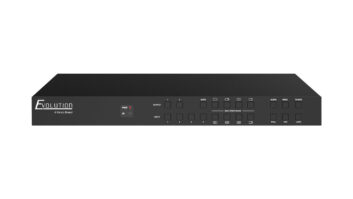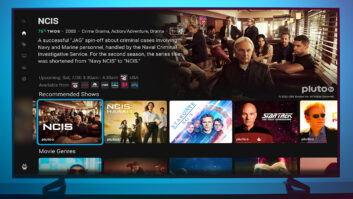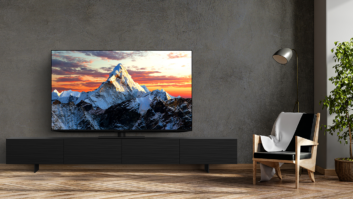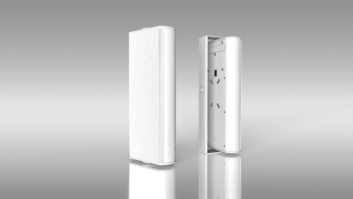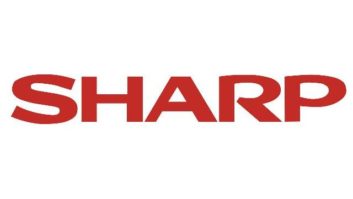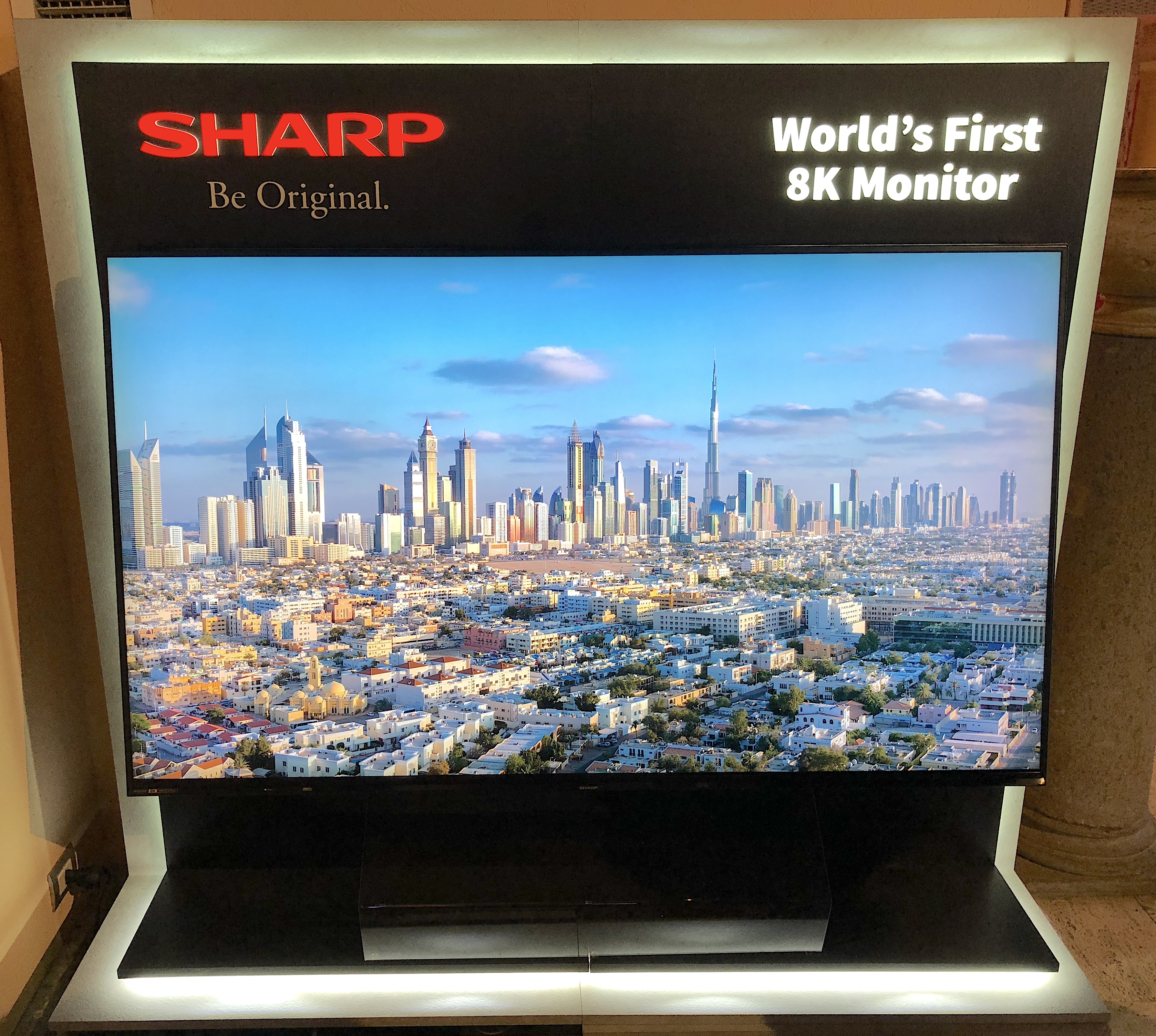
After years of teasing at varying trade shows, Sharp has finally begun shipping the world’s first commercially available 8K monitor, the 70-inch, 7,680 by 4,320 Aquos LV-70X500E (€11,199).
Thanks to the legal kerfuffle between Sharp, Sharp’s owners Foxconn, and Hisense, which bought a five-year license to manufacture and distribute Sharp TVs in the U.S. market in 2015, this Aquos 8K monitor is not scheduled to ship in the U.S. in the foreseeable future, according to a Sharp representative. It went on sale in China, Japan and Taiwan at the end of last year, and shipments will begin in April to Europe.
However, 8K monitors are likely to be available in the U.S. at the end of the year from a variety of other brands. TCL, which claims to have risen to the world’s No. 3 best-selling TV brand and only a percentage point behind LG, all but announced its intention to unveil its own 8K TV at last September’s IFA show in Berlin. It’s likely that all the major Chinese TV brands will show their own 8K models at IFA this summer and at CES 2019 in January.
See: Sharp Puts 8K Roadmap On Display At CES
Regardless of how many brands throw their panels into the 8K ring, actual sales are likely to be low. “In U.S. retail, the 8K TV market is expected to show significant percentage growth over the next three years, although absolute units will be fairly small,” said Mark Vena, senior analyst at Moor Insights and Strategy. “Over the next three to five years, growth will accelerate as retailers exploit price point declines, as well as being aided by the gradual introduction of 8K live and streaming content which will start to ramp over this time period as well, though a non-trivial tailwind will be that 8K live broadcast content has high bandwidth requirements.”
More specifically, only 85,000 8K sets are likely to be sold worldwide this year, growing to a mere 5.4 million out of nearly 250 million total TVs projected to be sold in 2022, according to Paul Gray, director of research and analysis for technology, media and telecom for IHS Markit. Display Supply Chain Consultants (DSCC) and Insight Media agree with IHS’s conservative view, forecasting global 8K sales of just 100,000 units in 2018, rising to 5.8 million in 2022.
Considering such low projected sales, and considering precious little 4K — much less 8K — content exists, why the move to 8K? For Sharp, the move to 8K is “a fair one,” Gray said. In the 2000s, the company pioneered then dominated the large screen premium LCD HDTV market. But, “in general, Sharp as a TV brand, has been neglected and bashed about the last 10 years,” Gray observed. “Sharp did ship a lot of TVs last year, but they have to start re-building the brand. 8K is a way for them to raise the competitive bar, to serve as a market differentiator, and a way to make a little bit of money before other people pour into the 8K market.”
Watch: What Is MicroLED TV?
Sharp also emphasized that it believes the initial market for the 8K won’t be consumers, but the commercial and industrial markets, such as for medical imaging, professional broadcast and security monitoring. But Sharp has been building an 8K ecosystem to support content creation and varying vertical applications as well as manufacturing for potential consumer consumption. NHK in Japan, which also has been investing heavily in 8K, has committed to inaugurating an 8K channel on December 1 this year with thousands of hours of programming.
“Sharp knows 8K is not going to be an overnight hit,” Gray explained. “But they sense they have a lead in the panels and, therefore, what you need then is manufacturing experience. So they will have an advantage if they develop a[n OEM panel] business out of it.”
There is a ready market for 8K in China, where customers are mad for high-pixel-number resolution, regardless of content availability, which has made the country the world’s biggest market for 4K UHDs. But building more technologically advanced brand reputations outside its local markets also is driving the Chinese TV maker rush to 8K.
Gray noted, however, that the more established Korean brands are unlikely to enter the 8K fray in the immediate future. Samsung and LG, the world’s leading TV sellers, “have the technology, but when would it be a sensible time to launch? Are they committed to 8K as part of their roadmap? No. They will be reactive and move when they feel it is appropriate.”
See: LG Prices Out 2018 OLED TV Line
Vena disagreed somewhat. “Samsung would be a likely early provider of 8K TVs in the latter part of 2018, but they will be priced at a premium level at initial introduction.”
Japanese TV brands also are likely readying their own 8K entries. “Sony and Panasonic have skin this game, too,” Gray said, “but in their broadcast and pro divisions. But within 18 months, everyone will have an 8K flagship.”




